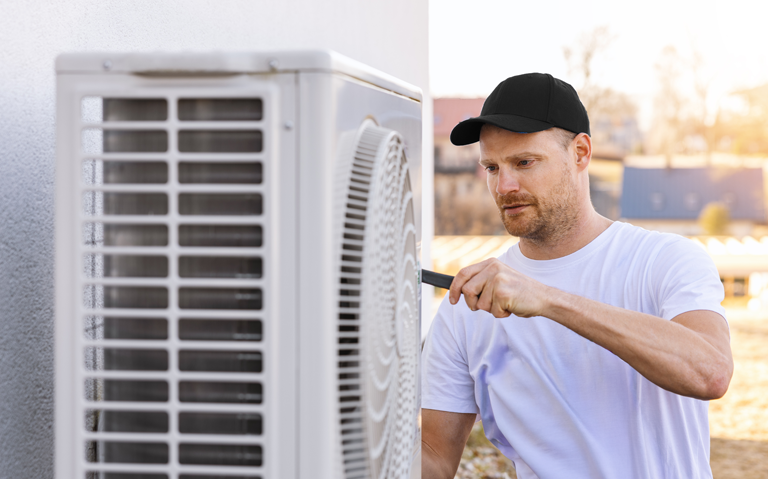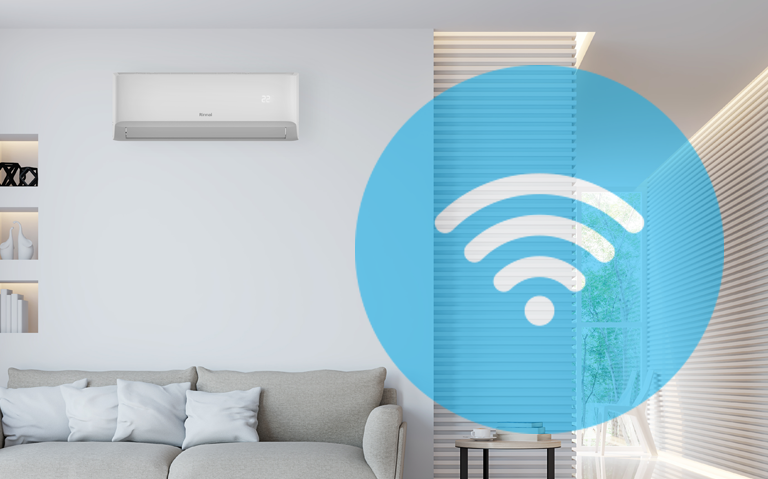Thinking about installing a hot water heat pump?
Here’s the short answer: You’ll need a licensed plumber, a certified electrician, and a suitable installation site. While it might sound complex, with the right planning — and the right system — installation can be smooth, cost-effective, and future-ready.
At Rinnai, our HydraHeat® Integrated, HydraHeat® Split and Enviroflo™ GR Series hot water heat pumps are purpose-built for New Zealand homes. Designed for efficiency, compliance, and performance even in harsh conditions (HydraHeat® operates down to -10°C in full heat pump mode), they can reduce your water heating energy use by up to 75%* compared to traditional electric cylinders.
Whether you’re a homeowner planning a renovation or a builder looking for installation clarity, this guide breaks down everything you need to know — from site prep and electricals to compliance and commissioning.
💡 Prices and product information correct as of July 2025.
*When a comparison calculation is made to a 250L standard electric hot water cylinder when heating water from 19°C to 55 °C
Table of Contents
- Follow this process for hot water heat pump installation
- Save up to 75% on hot water costs with a Rinnai hot water heat pump
- Common questions about hot water heat pump installation
Follow this process for hot water heat pump installation
Follow these steps to ensure your installation is fast, safe, and compliant.
Choose a qualified installer
While you don’t need a licensed tradesperson to physically mount the heat pump, a certified electrician (licensed electrical worker) must complete the wiring.
Why choose Rinnai’s accredited installers?
- Access to Rinnai’s extended 7-year cylinder warranty (HydraHeat®)
- Reliable, code-compliant installation
- Eligible for NZ Green Energy Loans to help finance the install
Check typical installation costs
Choose the best location
Hot water heat pumps work best when placed in an area with good airflow and low noise sensitivity.
HydraHeat® Integrated outdoor installation requirements:
- 500mm clearance on each side
- 500mm clearance above
- 10mm from rear wall
- Stable concrete or timber platform
- Away from windows and neighbour boundaries (minimise noise)

HydraHeat® Split outdoor installation requirements:
- 500mm clearance on display side
- 150mm clearance on non-display side
- 500mm clearance above
- 150mm from rear wall
- 1000mm front fan-side
- Stable concrete or timber platform
- Away from windows and neighbour boundaries (minimise noise)

Enviroflo™ GR outdoor installation requirements:
- 500mm clearance on fan discharge side
- 150mm clearance on fan suction side
- 300mm minimum clearance above
- 50mm from rear wall
- 300mm front
- Stable concrete or timber platform
- Away from windows and neighbour boundaries (minimise noise)

HydraHeat® and Enviroflo™ GR Series are designed for outdoor use.
Prepare the installation site
Ensure the site is flat, stable, and well-supported.
Outdoor installation needs:
- Concrete base or treated timber platform
- Use a Rinnai mounting kit if required
- Accessible for future servicing
Install plumbing connections
A plumber connects the heat pump to the hot water cylinder. Insulation is critical to prevent heat loss.
Rinnai HydraHeat® Integrated features:
- Modular HydraHeat® design
- Removable head unit for easy servicing
- Stainless steel or enamel cylinder compatibility
Electrical installation
Performed by a certified electrician, this includes:
- Installing isolators
- Wiring to the switchboard
- Ensuring RCD protection
Follow AS/NZS 3000 and manufacturer instructions.
Install sensors
Tank sensors monitor water temperature and control the heat pump.
Best practice:
- Install at manufacturer-recommended height
- Ensure secure, moisture-protected connections
Commission the system
Final setup involves:
- Filling the cylinder
- Leak and pressure testing
- Activating operation via control panel or app (HydraHeat®)
- Selecting an operating mode:
HydraHeat® Integrated operating modes:
- Standard – balanced performance
- Boost – rapid heating
- Eco 55 / Eco 50 – maximise efficiency
- High Usage – for large households
- Element Only – backup electric heating
Obtain necessary certificates
After electrical work, you must receive:
- Electrical Certificate of Compliance (CoC)
- Electrical Safety Certificate (ESC)
These documents confirm the installation meets NZ regulations.
Ensure compliance
Rinnai installations must meet:
- NZ Building Code
- Electricity (Safety) Regulations 2010
- Health and Safety at Work Act 2015
- AS/NZS 3500.4, AS/NZS 60335-2-40, and AS/NZS 5149
Rinnai’s accredited installers ensure your system ticks all the boxes.
Save up to 75%* on hot water costs with a Rinnai hot water heat pump
Rinnai’s hot water heat pumps are built for Kiwi homes and climates. Choose HydraHeat® for premium performance and low running costs or go for Enviroflo™ GR for budget-friendly reliability.
✅ Lower carbon footprint
✅ Faster ROI
✅ Engineered for NZ conditions
👉 Explore our hot water heat pump range
*When a comparison calculation is made to a 250L standard electric hot water cylinder when heating water from 19°C to 55 °C
Common questions about hot water heat pump installation
What regulations do I need to follow for installing a hot water heat pump in NZ?
Installations must meet NZ Building Code, electrical standards, and manufacturer requirements. Rinnai systems are MEPS-compliant and built to AS/NZS 5149 standards.
How do I ensure my hot water heat pump installation meets the Building Code Clauses?
Use an accredited installer, secure necessary consents, and follow the manufacturer’s guide. Rinnai systems come with installation manuals aligned with NZ requirements.
What qualifications should my installer have?
Use a certified electrician for wiring and a licensed plumber for water connections. Rinnai recommends using Rinnai-accredited installers for full warranty eligibility.
Are there specific safety precautions I need to take during installation?
Ensure the site is stable and dry, use proper clearances, and follow lock-out/tag-out procedures during electrical work. Always verify CoCs post-installation.
Can I install my own hot water heat pump?
No, as electrical and plumbing work must be done by certified professionals, DIY installation is not recommended due to compliance risks.
Ready to start your installation?
Talk to your local Rinnai expert and find the perfect heat pump water heater for your home.
👉 Get in touch with a Rinnai Hot Water Heat Pump Installer near you
Prices and product information correct as of July 2025.














